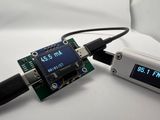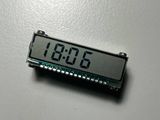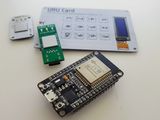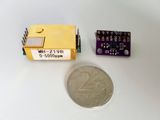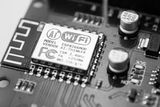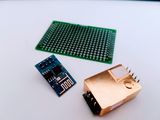Posts tagged with “platformio”
Low-Power LCD Clock with ESP32-C3 and Custom HT1621 Driver
URU Card - minimal FIDO2 implementation with Arduino
Finally, a working BLE-based FIDO2 authenticator on Arduino! The URU Card project now supports basic credential creation and authentication via ESP32. Still early-stage (with hardcoded keys for now), but it’s enough to pass WebAuthn tests in Windows—and it’s open for everyone to try and build on.
Comparison of CO2 sensors MH-Z19B and CCS811
I hooked up both the MH-Z19B and CCS811 CO₂ sensors side by side and logged data for a full week. The results? They mostly follow the same trends—but actual readings vary wildly, sometimes by 1000+ ppm. Which one’s accurate? Hard to say without a calibrated reference…
Carbon Dioxide Sensor CCS811
Picked up a CJMCU-811 CO₂ and air quality sensor to compare it with my go-to MH-Z19B. It’s smaller, cheaper, uses I2C, and reacts super fast (you can literally breathe on it and watch the values change). One of my two units didn’t work, though—so quality might be hit or miss.
Carbon Dioxide Sensor MH-Z19b - Part 2 - Software
In Part 2 of my CO₂ sensor project, I set up the MH-Z19b with Arduino and ESP8266 using PlatformIO. Added WiFi-based configuration with my own WiFiConfig library, and used RecurringTask to keep everything responsive without blocking the loop. It’s simple, wireless, and super easy to tweak from your browser!
ESP8266 - simple configuration over WiFi
While building my CO2 sensor, I wanted to manage the device over WiFi—no buttons, no cables. So, I made a sleek web-based config panel using VueJS and Tailwind CSS, all running right on the ESP8266. Here’s how I replaced manual setup with a modern, async, file-based config system.
Carbon Dioxide Sensor MH-Z19b - Part 1 - Hardware design
Ever feel like the air in your room gets a bit… stale? I picked up a cheap MH-Z19b CO2 sensor and built a simple home air quality monitor using an ESP8266 and some DIY magic. Here’s how I prototyped it (twice!) and got it up and running with WiFi and colorful LED alerts.
